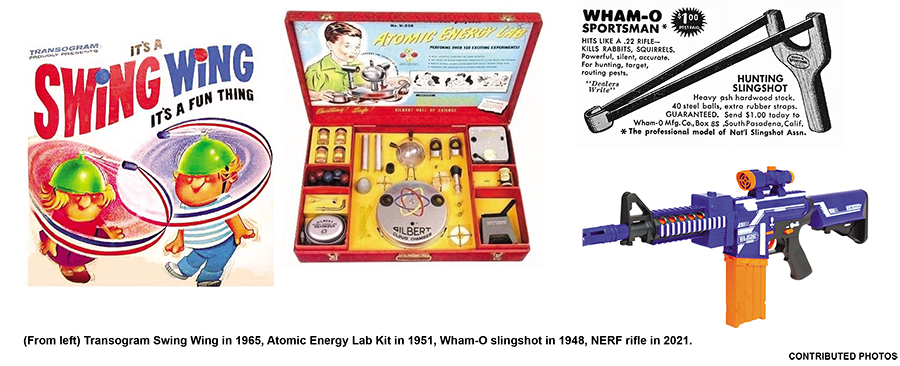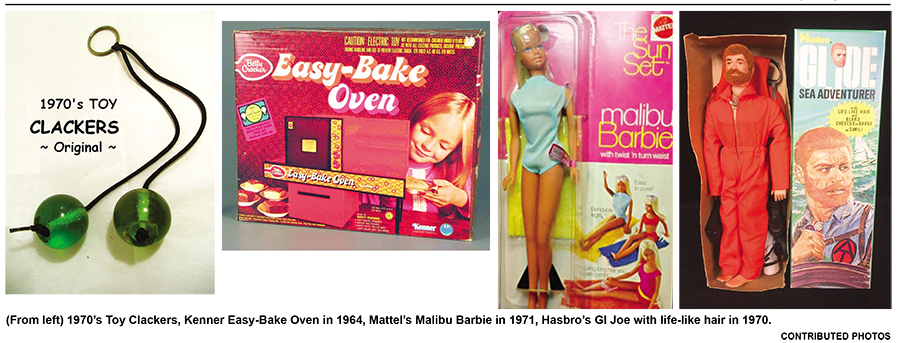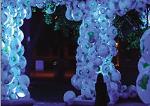
The fundamental nature of toys
By Tim Lambrinos
Children learn special skills by imagining and pretending, and the use of toys has been a valuable mechanism to expand an imagination of a young mind.
Toys have been proven to help build skills in many essential developmental areas for children. And occasionally there are educational toys that have been proven to boost a child’s IQ level by bettering memory retention, thought coordination and increasing literacy. Toys can also help children develop problem-solving skills, teach them about conflict resolution and develop an understanding of how cause and effect actually work. They can teach children lessons about sharing and help develop motor skills while nurturing both creativity and imagination. In a nutshell, children’s toys and games can assist challenging young minds and allow them to grow.
Over the years, toys have evolved considerably from being simple porcelain-faced dolls to electric trains and into the multi-faceted electronic gizmos of today. And in today’s more cautious and politically correct world, some of the toys from yesteryear have now been banned.
The alternative point of view could be argued that no toy could ever be problem-free. That is, if not handled properly.
But safer toys could be something as simple as children playing with empty boxes, old clothes, hats, old telephones, or stuffed animals. However, some of the more hazardous children’s toys from years’ past like clackers, super-slider sno-skates, lawn darts, chemistry sets, throwing daggers and fencing swords have all been replaced in today’s age with modern safer versions. Sometimes with components made out of sponge or nerf materials.
One of the more controversial toys from 1951 attempted to target young, scientific minds. AC Gilbert came out with a toy kit called the Atomic Energy Lab that actually contained three sources of radiation and four with uranium ores (alpha, beta and gamma particles). They did emit low levels of radiation. The kit came with a battery-operated U-238 Geiger counter, a Wilson cloud chamber, a spinthariscope, four samples of uranium-bearing ores and an electroscope that measured radioactivity. It also included a cartoon book outlining how to prospect for your own uranium and offered a $10,000 reward by the U.S. government if anyone found some. Fortunately, the kit was discontinued in 1952 as a result of being too expensive ($520 by today’s standards).
In 1965, the Transogram Company released a toy called the Swing Wing. It was advertised to be a fun thing. It contained a plastic beanie cap that was secured to the top of the head as an object would spin rapidly around. The toy was pulled from the market shortly afterward for creating too many injuries.
And there were other kids’ toys deemed equally as hazardous as the sling-shot, wheelie bar, air blaster and wing-ding. All these were made by a company called Wham-o. While many of Wham-o’s original toys were taken off the market decades ago, Wham-o’s 1957 Frisbee still remains popular today and has developed a youth culture of its own.
Other children’s toys from year’s past, like the Easy-Bake Oven and the Little Lady Oven, once attempted to enhance little girls’ lives. Until they too were also taken off the market. Some toys have maintained their popularity and stood the test of time. Mattel’s Barbie doll remains a top seller, even today, along with Marx’s Rock-em-Sock-em Robots. A rebranded version of this competitive game was released in 2000 by Mattel but features physically smaller robots.
Puppets are one of the original and inexpensive toys that are still in demand today. But they have an additional beneficial feature that stimulates and enhances pretending. This is accomplished when a child practices ventriloquism and moves their fingers to simulate moving mouths and arms as the puppets appear to come to life. More experienced pretenders enjoy putting on puppet shows using multiple puppets, or even puppets they’ve made themselves out of old socks. A cardboard box can make a great puppet theatre too.
Puppet shows encourage collaboration and peer play with older children while still maintaining an excellent degree of safety for the child.
Play-Doh by Kenner is another toy that many children have continued to enjoy since 1955.
The sensory experience of squishing, rolling, and manipulating the substance is a way to challenge new pretenders into using their imagination.
There is still an even older toy that remains around today called Lego blocks. They originated in Denmark in 1932. Children are challenged to build something simple and familiar, like a house or a garage for their favourite car.
More experienced pretenders might pretend individual blocks are beds in a hospital or pieces of garbage for the garbage truck. Or they might enjoy creating elaborate scenes out of blocks, such as building a complete Lego city.
Some Lego sets today are designed to build something specific, like a spaceship or a castle. There’s no limit to what can be created with these blocks.
One of the old standard toys that never seem to just fade away are teddy bears.
However, these days many teddy bears can often do much more than just pretend.
There’s another great toy that’s still around today that exploded into the market when it was first released. Since 1968, Mattel’s Hot Wheels have been a popular item for boys and are still driving strong today, especially at Christmas time.
One of the most popular toys from last year’s Christmas was the nerf rifle. As complex and aggressive as some new things seem to become, toys today still need to challenge youngsters to learn lessons and to use good judgement in their usage.
Today, there are new and complex, remotely driven toy cars and other electronic flying gadgets that seem to press the limits of a child’s coordination. It will be fascinating to know what types of toys children will be using 100 years from now.
Will any of the old standards, like Hot Wheels, still be around to maintain a prominent and beneficial place within our society?
That’s a question that will never get old.




















